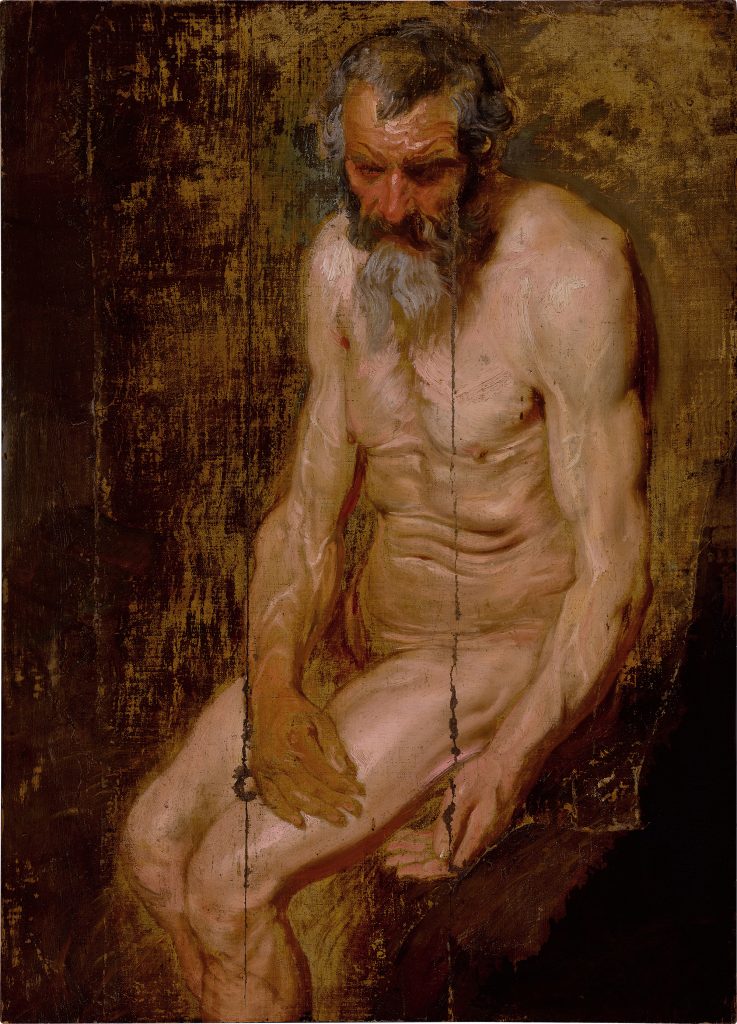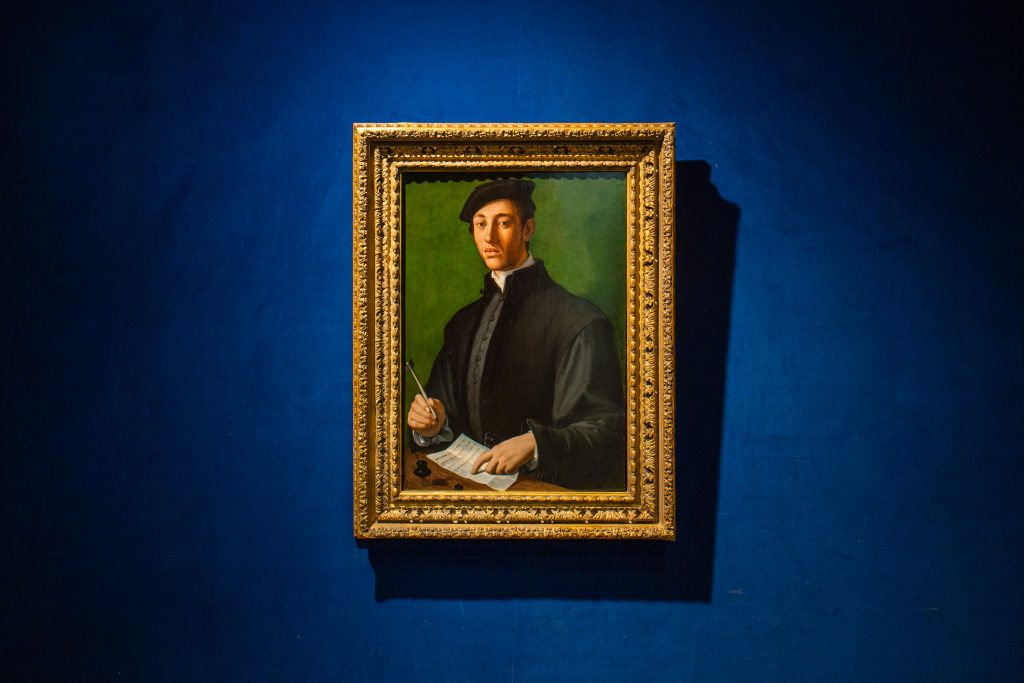Auctions
An Oil Sketch Found Covered With Bird Droppings in a Farm Shed Is Actually an Early Van Dyck, Now Heading to Auction for $3 Million
The painting joins other newly resurfaced European masterworks in Sotheby's Old Master series.

The painting joins other newly resurfaced European masterworks in Sotheby's Old Master series.

Min Chen

An oil sketch by Anthony van Dyck, executed early in the Flemish artist’s career and rediscovered in a farm shed some four centuries later, will star in Sotheby’s Master Week series, where it is estimated to pull in up to $3 million.
A Sketch for Saint Jerome is one of only two known live model-based studies by Van Dyck, likely created between 1615 and 1618, when the young painter was working as an assistant in Peter Paul Rubens’s Antwerp studio. The work captures a slouching elderly man, his face in shadow and his lean musculature finely rendered—a depiction that served as a study for Van Dyck’s Saint Jerome (1618–20), currently held by the Museum Boijmans van Beuningen.
The oil sketch was discovered in a barn in Kinderhook, New York, in 2002, and acquired at auction by local collector Albert B. Roberts. Though the back of the canvas was reportedly dotted with bird droppings, Roberts believed the artwork to be a Dutch Golden Age painting and bought it for $600.
He had his find authenticated in 2019, when art historian Susan Barnes recognized it as a “surprisingly well-preserved” work by Van Dyck. “The oil sketch,” she wrote, “is an impressive and important find that helps us understand more about the artist’s method as a young man.”
The Van Dyck sketch, offered to Sotheby’s by the estate of Roberts, who died in 2021, joins a number of other freshly resurfaced European masterworks in the auction house’s Old Master series.

Agnolo di Cosimo, called Bronzino, Portrait of A Man, Facing Left, With A Quill and a Sheet of Paper (ca. 1527). Photo courtesy of Sotheby’s.
Portrait of a Man with a Quill and Sheet of Paper (ca. 1527), a rare piece by Agnolo Bronzino, will hit the block following a storied line of ownership and misattribution. Munich collector Ilse Hesselberger acquired the canvas in 1927, believing the portrait to be the work of another Florentine artist. During World War II, the painting was seized by the Nazis, reattributed, and installed in various governmental offices in Germany.
Last year, the work was restituted to Hesselberger’s heirs, who consigned it to Sotheby’s. There, it was restored and its radiant surfaces recognized as emerging from the assured hand of a young Bronzino (and likely even his self-portrait), echoing his other early oils such as Portrait of the Woman in Red (ca. 1533) at the Städel Museum.
The painting leads the Master Paintings auction with a high estimate of $5 million, proceeds of which will benefit the Selfhelp Community Services and the Lighthouse Guild.
Also included in the same sale is an expressive portrait newly attributed to Titian. Titled Ecce Homo—not to be confused with the artist’s massive 1543 composition of the same name that hangs in Vienna’s Kunsthistorisches Museum—the unfinished oil is painted with the proto-Impressionist flair that marked Titian’s late period, depicting Christ, crowned with thorns, being presented to Pontius Pilate. It is expected to fetch between $1.5 to $2 million.

Giandomenico Tiepolo, Head of a bearded man in a blue and yellow collared robe (ca. 1757). Photo courtesy of Sotheby’s.
Rounding out the sale is a group of Old Master paintings that will enter the market for the first time. Three previously unknown works by Giandomenico Tiepolo, executed around 1757, and forming a set of imagined portraits of Greek philosophers Demosthenes, Socrates, and Aristotle, carry estimates between $80,000 to $2 million each.
Yet another newly attributed painting, Sebastiano del Piombo’s Portrait of a Woman Holding a Crown of Laurels (ca. 1540s), is making its debut as well. While three other versions of this same portrait exist—most notably, one that was sold at Christie’s London in 2015 from the collection of Lord and Lady Kennet—this particular panel, the largest and with a provenance that goes back to the Russian Dolgorukov dynasty, has been deemed the original. Its estimate starts at $1.5 million.
Sotheby’s Master Week series in New York runs from January 18–30. A public exhibition opens January 21.